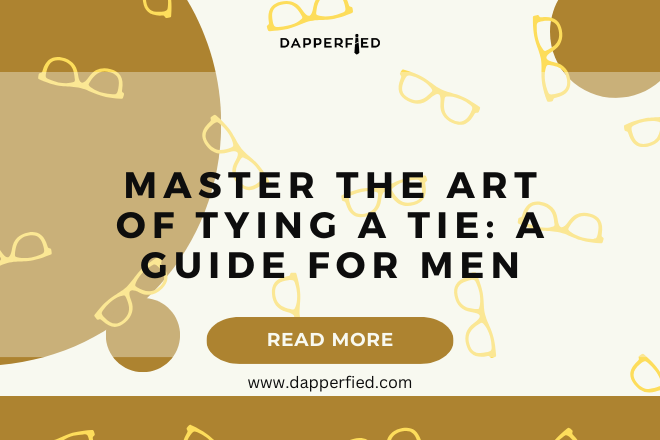
Men's Style
Expert Men’s Tie Buying Tips: How to Choose the Perfect Tie
When it comes to tie fabrics and textures, there are a wide variety of options to choose from. Silk is the most common and popular choice for ties due to its luxurious look and feel. It is smooth, shiny, and drapes beautifully, making it a versatile option that can be worn for both formal and casual occasions. Another popular fabric for ties is wool, which is known for its warmth and texture. Wool ties are great for adding a touch of texture to your outfit and are perfect for the colder months. Other fabric options include cotton, linen, and microfiber, each with its own unique characteristics and benefits.
In addition to fabric, the texture of a tie is also an important consideration. A smooth, shiny silk tie is a classic choice that works well for formal events, while a textured tie, such as a knit or woven tie, can add depth and interest to your outfit. Knit ties have a more casual and relaxed look, making them perfect for less formal occasions, while woven ties have a more intricate texture that adds a touch of sophistication to any outfit. Understanding the different fabrics and textures available will help you choose the right tie for any occasion and ensure that you always look your best.
Key Takeaways
- Different tie fabrics and textures can create different looks and are suitable for different occasions.
- The right tie width and length should complement the wearer’s body type and suit style.
- Matching ties with shirts and suits involves considering color, pattern, and fabric coordination.
- Patterns and colors should be chosen carefully to create a cohesive and stylish look.
- Different tie knots can add personality and style to an outfit, and should be chosen based on the occasion and shirt collar style.
- Quality and construction are important factors to consider when selecting a tie for durability and longevity.
- Caring for and maintaining ties involves proper storage, cleaning, and handling to preserve their appearance and quality.
Selecting the Right Tie Width and Length
The width and length of a tie are important factors to consider when choosing the right tie for your outfit. The width of a tie can vary from slim (around 2 inches) to wide (around 3.5 inches), with the most common width being around 3 inches. Slim ties are a modern and trendy option that works well with slim-fit suits and shirts, while wider ties are a classic choice that pairs well with traditional or more relaxed fits. It’s important to consider the width of your suit lapels and the width of your shirt collar when choosing the width of your tie, as they should all complement each other for a balanced look.
When it comes to length, standard ties are usually around 57-58 inches long, which is suitable for most men. However, if you are particularly tall or have a larger neck size, you may need a longer tie to ensure that it reaches the right length when tied. On the other hand, if you are on the shorter side, you may need a shorter tie to avoid having too much excess length hanging down. Choosing the right length of tie will ensure that it looks proportional to your body and creates a polished and put-together appearance.
Matching Ties with Shirts and Suits
Matching ties with shirts and suits is an essential skill for any well-dressed man. When it comes to pairing ties with shirts, it’s important to consider both color and pattern. A solid color tie is a versatile option that can be paired with almost any shirt, making it a great choice for building a basic tie collection. When matching a solid color tie with a shirt, consider complementary or contrasting colors to create a cohesive look. For example, a navy tie pairs well with a light blue shirt for a classic and timeless combination.
When it comes to patterned ties, it’s important to consider the scale of the pattern in relation to the scale of the shirt pattern. If you’re wearing a patterned shirt, opt for a tie with a smaller or more subtle pattern to avoid clashing. Conversely, if you’re wearing a solid or subtly patterned shirt, you can choose a tie with a bolder pattern to add visual interest to your outfit. When pairing ties with suits, consider the formality of the occasion and the color of the suit. For formal events, such as weddings or business meetings, opt for classic colors like navy, black, or gray. For more casual events, you can experiment with bolder colors and patterns to add personality to your look.
Considering Patterns and Colors
| Pattern | Color | Impact |
|---|---|---|
| Stripes | Black and White | Creates a slimming effect |
| Floral | Various | Adds a feminine touch |
| Plaid | Red and Green | Evokes a traditional feel |
When it comes to patterns and colors, there are endless options to choose from when selecting a tie. Solid color ties are a timeless and versatile option that can be paired with almost any outfit. Classic colors like navy, burgundy, and forest green are great choices for building a basic tie collection that will work for a variety of occasions. When choosing solid color ties, consider complementary or contrasting colors to create a cohesive look with your shirt and suit.
In addition to solid colors, patterned ties are another popular choice that adds visual interest to an outfit. Striped ties are a classic option that can be worn for both formal and casual occasions. When wearing a striped tie, consider the scale and direction of the stripes in relation to your shirt and suit pattern. Other popular patterns for ties include polka dots, paisley, geometric prints, and floral designs. When choosing patterned ties, consider the formality of the occasion and the overall look you want to achieve.
Color is another important consideration when choosing ties. While classic colors like navy, black, and gray are versatile options that work for almost any occasion, don’t be afraid to experiment with bolder colors like red, purple, or teal to add personality to your outfit. When choosing tie colors, consider the season and the color palette of your outfit to create a cohesive and stylish look.
Exploring Different Tie Knots
Tie knots are an important aspect of wearing a tie and can greatly impact the overall look of your outfit. The most common tie knot is the four-in-hand knot, which is simple and versatile, making it suitable for most tie widths and collar types. The half-Windsor knot is slightly larger and more symmetrical than the four-in-hand knot, making it a great option for wider ties and spread collars. The Windsor knot is the largest and most formal knot, making it ideal for special occasions or when you want to make a statement.
In addition to these classic knots, there are also more unique and intricate knots that can add personality to your outfit. The Eldredge knot is a complex knot that creates an eye-catching woven effect, while the Trinity knot features three interwoven sections for a distinctive look. When choosing a tie knot, consider the formality of the occasion and the width of your tie to ensure that it complements your outfit.
Quality and Construction of Ties

The quality and construction of a tie are important factors to consider when choosing a tie that will last and look great for years to come. High-quality ties are typically made from natural fibers like silk or wool, which offer durability and a luxurious feel. When examining the construction of a tie, look for details like hand-rolled edges, which indicate superior craftsmanship and attention to detail. A high-quality lining is also important for ensuring that the tie retains its shape and drapes well.
In addition to materials and construction, consider the brand reputation and reviews when purchasing ties. Established brands with a reputation for quality craftsmanship are more likely to produce ties that will stand the test of time. When investing in quality ties, consider classic colors and patterns that will remain stylish for years to come.
Tips for Caring for and Maintaining Ties
Caring for and maintaining ties is essential for preserving their quality and appearance. To keep your ties looking their best, store them properly by hanging them on a tie rack or rolling them up in a drawer to avoid creases. When traveling with ties, use a tie case or roll them up carefully to prevent wrinkles.

To remove wrinkles from ties, hang them in the bathroom while taking a hot shower or use a handheld steamer on low heat. Avoid using high heat or ironing directly on the tie fabric, as this can damage delicate materials like silk.
If your tie gets stained, spot clean it immediately with a gentle fabric cleaner or take it to a professional cleaner for more stubborn stains. Avoid using harsh chemicals or bleach on ties, as this can damage the fabric.
With proper care and maintenance, your ties will continue to look great and add style to your outfits for years to come.
If you’re looking to complete your dapper look, you might want to consider investing in a quality suit. Check out this article on buying suits for some helpful tips on finding the perfect fit and style. Just like choosing the right tie, finding the right suit is essential for any well-dressed man.
FAQs
What are some common types of ties for men?
Some common types of ties for men include the classic necktie, the skinny tie, the bow tie, and the knit tie.
What materials are ties typically made from?
Ties are typically made from materials such as silk, polyester, wool, and cotton.
How do I choose the right tie width for my body type?
As a general rule, choose a tie width that is proportionate to the width of your lapels. If you have a slim or narrow build, opt for a skinny tie. If you have a broader build, a wider tie may be more suitable.
What are some popular tie patterns and colors?
Popular tie patterns include stripes, polka dots, paisley, and solid colors. Common tie colors include navy, black, burgundy, and gray.

How do I match a tie to my outfit?
When matching a tie to your outfit, consider the color and pattern of your shirt and suit. A tie should complement the colors and patterns of your attire, rather than clash with them.
What are some tips for tying a tie properly?
Some tips for tying a tie properly include ensuring that the tie reaches the top of your belt buckle, using a proper knot such as the Windsor or Four-in-Hand, and adjusting the length and width of the tie to create a balanced look.














